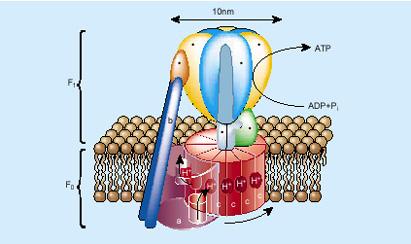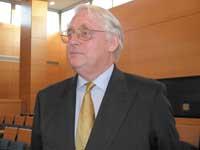Rotary Cell Motor
2001/04/19 Galarraga Aiestaran, Ana - Elhuyar Zientzia
The challenge was to know the functioning of the ATP synthase and in the journal Nature this week has published a work in which the scientist Yasuda and his team explain this operation.
According to this work, the ATP synthase consists of two rotary motors called F 0 and F 1. This mechanism uses motion to convert electrochemical energy into mechanics and finally to obtain chemical energy. To do this, the F 1 engine acts as an intermediary and rotates 120º. In addition, they have seen that each rotary step consists of two substeps.

F 0 and F 1 engines have specialized functions. The F 0 motor is associated with energy-producing cellular structures such as mitochondria. In it it channels the protons through its rotor and its non-rotating part, in order to achieve the turn. Motor F 1, meanwhile, catalyzes the production of ATP with ADP (adenosindiphosphate) and inorganic phosphate if motor F 0 gives the necessary rotating force.
Both engines can also work backwards. The F 1 isolate is called F 1 -ATPase, since if it does not receive force from the F 0 engine it hydrolyzes the ATP by reverse rotation. However, there is no direct test of the F 0 engine rotation. However, the 120º rotation of the F 1 motor and the time it takes in each step has been checked in vitro.
ATP synthase was one of the first enzymes to know that it interacts between their catalytic nuclei. There are currently net tests in which the spin produced by ATP and the F 1 motor are related.
Other molecular machines similar to the F 1 motor are also known. Thanks to them, the ATP associated with a catalytic zone generates production in another area through mechanical movements. An example is the GroEl auxiliary molecule that helps to well fold the new protein chains formed.
However, they continue to seek answers to many questions. The protein database being developed may provide statistical comparisons of related proteins, which will help researchers understand the mechanisms of enzymes.

Gai honi buruzko eduki gehiago
Elhuyarrek garatutako teknologia





